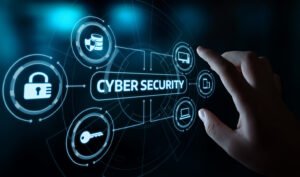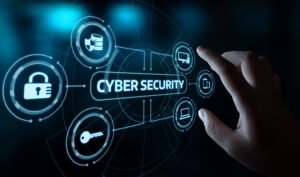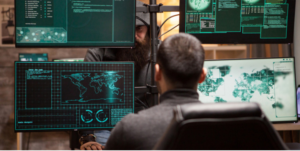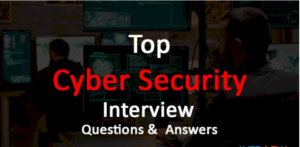Information technology (IT) encompasses computers and everything they can perform. IT security aims to secure computers, networks, and other digital systems from cyberattacks and other dangers. Check out our IT security training online to learn more.
Goals of IT Security
Simply simply, IT security tries to ensure that computer systems can perform their functions. This essentially boils down to protecting the “CIA triad”, which includes:
- Confidentiality: ensuring the privacy of data
- Integrity: Ensure that data has not been updated.
- Availability: Providing continuous access to data and systems.
Types of IT Security
IT security encompasses all areas of protecting IT assets from cyber threats. The modern business’s IT assets are scattered across various platforms, hence IT security must cover a wide range of systems from cybersecurity threats.
IT security includes:
- Identity Security: Identity security refers to methods and processes for identifying, verifying, and authorising machines, devices, users, groups, applications, and functions. This is required for identity and access management (IAM).
- Network security entails protecting on-premises networks, wide area networks (WAN), and the internet. To prevent attacks, networks are secured using technologies such as network segmentation, secure transmission, secure access, and content inspection.
- Cloud Security: As enterprises increasingly use cloud technology, they require cloud-specific security solutions. Common cloud security solutions include IaaS security (for infrastructure and workloads), PaaS security (for apps and containers), and SaaS security (for office suites and email).
- Endpoint Security: As more people work from home, endpoint security is more crucial than ever. This comprises device compliance and threat prevention for both traditional endpoints and mobile devices and safeguarding Internet of Things (IoT) devices with device detection, segmentation, and threat prevention.
- Application and API Security: Applications and application programming interfaces (APIs) constitute a significant portion of an organisation’s attack surface and should be protected through code review, analysis, and runtime analytics. In today’s organisations, security is integrated into the CI/CD pipelines as part of Shift Left Security and DevSecOps initiatives, rather than being bolted on or provided as an overlay to Infrastructure as Code.
- Management: Deploying an array of security solutions requires enterprises to manage them as well. This encompasses device configuration, monitoring, optimization, automation, and orchestration.
- Visibility and Incident Response: The purpose of IT security is to safeguard the organisation from cyber attacks. To do so, enterprises must maintain network visibility, ingest threat intelligence, and conduct forensics, threat hunting, and threat mitigation as needed.
Threats of IT Security
IT assets are an essential aspect of how businesses operate and a lucrative target for cybercriminals. There are numerous threats to IT security, including:
- Vulnerability Exploitation: IT assets frequently run software with potentially exploitable flaws. Cybercriminals can take advantage of this by directly targeting these systems via the network or mailing malicious files to exploit the vulnerabilities.
- Account Takeover: Cybercriminals can steal account credentials through phishing and other social engineering tactics. Attackers can use these credentials to take over user accounts and steal sensitive data, or they can use them to launch attacks.
- Financially Motivated Attacks: Cybercrime is a lucrative business with numerous revenue streams. Ransomware, data exfiltration, and Denial of Service (DoS) assaults are all examples of financial extortion.
- Advanced Persistent Threats (APTs): Advanced Persistent Threats are sophisticated threat actors funded by national governments or organised criminals. These gangs are capable of carrying out highly sophisticated attacks, such as exploiting supply chain vulnerabilities.
- Poor Security Practices: Lax security setups and access controls are a typical issue in both on-premises and cloud systems. Examples include the usage of default and weak credentials, which can be exploited via brute force attacks.
IT Security vs. Cybersecurity
IT security and cybersecurity are closely linked. Both focus on the security of an organisation’s IT assets and the data they contain, including protecting these assets against digital attacks. IT may also involve security measures to protect against physical threats.
The primary distinction between IT security and cybersecurity is that the latter goes beyond the former. While IT security is one aspect of cybersecurity, others include protecting sensitive and personal data of individuals or consumers, as well as the telecommunications and critical infrastructure sectors.
OT security Vs IT security
IT security differs from OT security, which applies to critical infrastructure systems. These systems communicate with and govern industrial control systems (ICS), such as those in a power plant or on an assembly line. While many of the systems used in OT contexts are similar to those used in IT environments, others are unique and highly specialised.
In addition, OT environments have different priorities than IT environments. In OT environments, availability and uptime are frequently the top priorities, hence systems may stay unpatched if an upgrade will cause downtime.
Because of the differences in systems and priorities between IT and OT environments, IT and OT security can be considered distinct areas. However, as OT environments become more integrated, strong IT security policies have a substantial impact on an organisation’s OT security posture, and vice versa.
Conclusion To learn more about IT security, you can check out our IT security classes online.






























